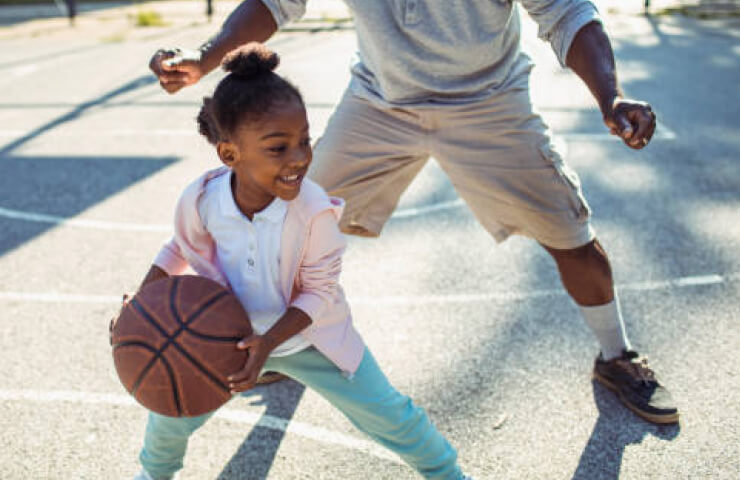Knee Conditions
The knee is one of the biggest and most complex joints in the human body. It provides us with the flexibility, strength, and stability we need to stand, walk, run, turn, and make other movements. It also supports the weight of our bodies.
Knee pain and injuries affect patients of all ages, making the knee one of the most common reasons patients seek orthopedic care. Knee pain can make it difficult to walk, get up from a chair, play sports, and more.
We Specialize in Treating
ACL Tear/Injury
Baker's Cyst
Chondromalacia Patella (Runner's Knee)
Iliotibial Band Syndrome
Knee Bursitis
Knee Pain/Injury
Meniscus Tear
Patellofemoral Pain Syndrome
Other Knee Ligament Injuries
All Knee Conditions
- ACL Tear/Injury
- ACL Reconstruction
- ACL Strain/Sprain
- Baker's Cyst
- Cartilage Injuries
- Chondromalacia Patella (Runner's Knee)
- Dislocated Knee
- Gout
- Iliotibial Band Syndrome
- Knee (Patellar) Fracture
- Knee Arthritis
- Knee Bursitis
- Knee Effusion
- Knee Osteoarthritis
- Knee Pain/Injury
- Knee Tendonitis
- LCL Strain/Sprain
- LCL Tear
- MCL Strain/Sprain
- MCL Tear
- Meniscus Tear
- Muscle Strain
- Muscle Trigger Points
- Patellar Subluxation
- Patellar Tendonitis
- Patellofemoral Pain Syndrome
- PCL Strain/Sprain
- PCL Tear
- Pseudogout
- Rheumatoid Arthritis
- Septic Arthritis
- Sports Injuries
- Other Ligament Injuries
Get Advanced Knee Care
Right In Your Neighborhood
Finding the treatment that’s right for your knee problem is our focus at The Orthopedic Health Center. We use non-surgical treatments whenever possible. When you do need surgery, our expert surgeons help you heal faster and with less pain. All right in your Hudson County neighborhood.
Anatomy of the Knee
The knee is the joint that connects the four bones of the legs:
- The femur: a bone that runs through the thigh and is responsible for bearing the weight of the body and providing stability. The femur is the longest and strongest bone in the body.
- The tibia: one of two bones located in the lower leg. Its primary function is to bear weight for the lower leg and provide stability.
- The fibula: the second and smaller bone in the lower leg that is next to the tibia. It does not bear weight, but instead provides stability support for the ankle joint.
- The patella: also known as the kneecap, the patella is a small bone that sits at the front of the knee. Its primary function is to protect the knee joint.
The knee joint is supported by cartilage, muscles, tendons, and ligaments, each of which provides a specific function that facilitates movement of the knee.
Cartilage in the Knee
Cartilage is a tough yet flexible tissue that has many forms and functions throughout the body. In the knee joint, there are two different types of cartilage: fibrous cartilage (also known as the meniscus) and articular cartilage.
The meniscus is a crescent-shaped piece of cartilage that acts as a shock absorber by reducing friction and providing stability to the knee when engaged in motion and extension. It’s located between the tibia and femur. Articular cartilage is a smooth layer of tissue that covers the ends of bones. In the knee, this type of cartilage is found on the ends of the femur, tibia, and the back of the patella. The smooth texture of articular cartilage allows the femur and tibia to glide over each other with minimal friction.
Muscles of the Knee
Muscles are tissues that help you move and support your body. The main muscles that provide power and control for the knee are the quadriceps muscles and the hamstring muscles. The quadriceps muscle group is located at the front of the thigh, while the hamstring muscle group is located in the back of the thigh, running from the hip to just below the knee. Both the quadriceps and the hamstring muscle groups play a crucial role in many dynamic activities, including walking, running, jumping, and squatting.
Tendons in the Knee
Tendons are tough yet flexible cords of tissue that connect muscle to bone. The knee has three types of tendons:
- Hamstring tendons: The hamstring tendons are three tendons that are located in the back of the knee – two on the inside of the knee attached to the tibia, and one on the outer part of the knee attached to the fibula.
- Quadriceps tendon: This tendon is responsible for attaching the quadriceps muscles to the patella.
- Patellar tendon: The patellar tendon connects the patella to the tibia and plays a crucial role in our ability to run, jump, and perform other dynamic movements.
Ligaments in the Knee
Ligaments are tough bands of tissue that connect bones or cartilage. They support and strengthen joints. The knee consists of four ligaments:
- The anterior cruciate ligament (ACL): Located in the middle of the knee, the ACL is a thick band of tissue that connects the femur to the tibia. Its primary function is to provide stability and prevent the tibia from sliding out of place from the femur.
- The posterior cruciate ligament (PCL): Like the ACL, the PCL also connects the femur to the tibia, except the PCL is located in the back of the knee. It provides stability and support for when the knee moves in a front-to-back or back-to-front motion.
- The lateral collateral ligament (LCL): The LCL is located along the outer part of the knee and connects the femur to the fibula. Its main function is to prevent your knee from buckling outward when bending, changing direction, or twisting.
- The medial collateral ligament (MCL): The MCL is located on the inner part of the knee and connects the femur to the tibia. Its function is to keep the knee from moving sideways.
Knee Pain FAQ
A: Because knees are prone to wear and tear from regular use, it’s not uncommon for people to experience minor aches and pains in their knees on a regular basis. These pains may go away on their own, but not always. If your knee pain doesn’t go away or is disrupting your life in any way, you should not ignore it. This is especially true if you’re experiencing other symptoms, such as popping noises, instability, swelling, movement within the knee, redness, or warmth. All of these symptoms can indicate a condition or injury that requires medical care.
A: In some cases, you may be able to successfully reduce knee pain using at-home treatment methods. One of the simplest forms of at-home self-care for knee pain is resting the knee and giving it a chance to heal. While resting, it can be helpful to elevate the affected leg in order to reduce swelling in the knee. Applications of ice and heat are also popular methods of knee pain management. However, if your knee pain continues to persist, it’s recommended that you schedule an appointment with an orthopedic knee specialist.
A: The need for orthopedic knee surgery is highly dependent on the source and severity of your knee pain. While orthopedic surgery is sometimes recommended for some types of knee pain and injuries, orthopedic knee specialists often utilize more conservative treatments before turning to surgery. There is a wide range of non-surgical orthopedic techniques that can be utilized within a personalized treatment plan, including physical therapy, steroid injections, and orthopedic devices (casts, splints, etc.).
A: Knee pain is frequently associated with age. As we get older, the fluid inside the knee that lubricates the joint (known as synovial fluid) diminishes, ligaments lose some of their flexibility, and cartilage starts to wear down, all of which can cause pain and stiffness. Knee pain is also commonly caused by injuries from sports, physical labor, and other activities.
A Minimally-Invasive Approach to Knee Repair
A common misconception is that you need a big, open surgery to fix your knee. We use modern, minimally-invasive procedures to avoid this path whenever possible – and many of our patients are up and walking by the next day.
Knee Injuries: Sprains, Tears, and Fractures
Because the knee is such a large and complex joint, there are a wide variety of ways in which it can be injured. Most knee injuries occur because of high-impact sports (football, gymnastics, etc.), car accidents, falling, or twisting the knee suddenly.
One of the most common types of knee injuries is knee sprains, which occur when any of the ligaments contained within the knee become overstretched or torn. Symptoms can vary depending on which ligaments are affected and the severity of the sprain, but common symptoms include pain, instability, swelling, popping noises or sensations, tenderness, and stiffness.
Another type of knee injury that affects the supportive tissues of the knee is partial or complete tears. Some of the most common types of knee tears include ACL tear, MCL tear, and torn meniscus.
In addition to injuries that affect the supportive tissues of the knee, knees can also suffer from a fractured patella, which happens when a break occurs in the kneecap. Symptoms of fractured kneecaps generally include pain and swelling, but can also include bruising, the inability to walk, the inability to straighten the leg, and deformity.
Comprehensive Orthopedic Care for Knee Pain
Our orthopedic specialists have extensive experience diagnosing and treating knee pains of all kinds. Some of our treatment options for knee pain include:
- Comprehensive Orthopedics
- Sports Medicine
- Pediatric Orthopedics
While we always take a conservative approach towards treatment, our expert orthopedic surgeons also perform minimally-invasive surgery whenever necessary so that you can heal faster and with less pain. Contact us today for advanced orthopedic knee care right in your neighborhood: Hoboken, Jersey City, or Bayonne.
Edward Feliciano, MD
Director of Orthopedic Surgery
Edward Feliciano, MD is a board-certified orthopedic surgeon and the Director of Orthopedic Surgery with training from Yale, Cornell and Georgetown University.
Appointments available now.















